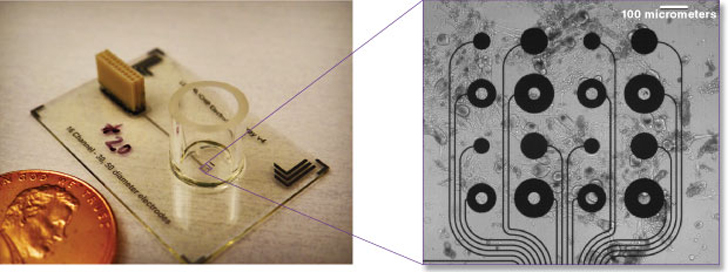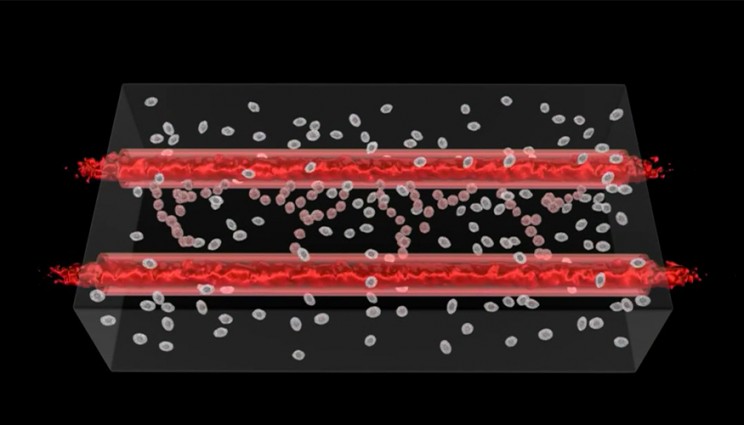Lawrence Livermore National Laboratory is involved in some pretty exciting research, including, but not limited to, 3D printing graphene and 3D printing metamaterials with unique properties and geometric structures. Their latest advances fall directly into the bioprinting field, where LLNL has 3D printed structures meant to develop into blood vessels on their own.
“It’s going to change the way we do biology,” says Monica Moya, the project’s principal investigator and a Lab research engineer. “This technology can take biology from the traditional petri dish to a 3D physiologically relevant tissue patch with functional vasculature.”
To create the structures, the LLNL team first 3D printed tubes with human primary cells and biomaterials, which would deliver nutrients to the surrounding 3D printed environment. This makes it possible for capillaries to connect to the bioprinted tubes, in order to deliver nutrients as they would in organic tissues. The amazingly simple video below illustrates the process in a way that is really easy to understand, showing cell-laden biomaterial extruded onto a build plate (from an original MakerBot Replicator?). Once blood is pumped into the structure, capillaries (automagically?) begin to form. And, because the material is completely organic, with actual living cells extruded, there is a greater chance that they will behave as human cells do.
Moya elaborates, “If you take this approach of co-engineering with nature you allow biology to help create the finer resolution of the printed tissue. We’re leveraging the body’s ability for self-directed growth, and you end up with something that is more true to physiology. We can put the cells in an environment where they know, ‘I need to build blood vessels.’ With this technology we guide and orchestrate the biology.”
3D printing vasculature is one of the crucial areas being explored in the field of bioprinting, as blood vessels and arteries are necessary for feeding oxygen and nutrients to other 3D printed tissues in order to expand them into more complicated cell types. For the most part, researchers have been able to 3D print tissues with simple, often homogeneous cell types, but, once they are able to incorporate vasculature into those constructs, they will be able to develop more complex tissues with multiple cell types and, eventually, complete organs.

For LLNL, however, the goal is to build their in vitro Chip-based Human Investigational Platform, or iCHIP, which will replicate the human body on a microscale. This will include tiny central and perphipheral nervous systems, the blood-brain barrier, and the heart. Lab research engineer Elizabeth Wheeler, the principal investigator for iCHIP, explains how this research contributes to the development of the iCHIP, “Bioprinting adds another dimension to tissue–on-a-chip platforms. Having the ability to control the 3D structural environment, along with growing vessel networks to support the growing tissue, is one part of replicating the complexity of the human body.”

In an AMA hosted yesterday on the topic, Moya and Wheeler addressed questions from the reddit audience, where they further describe both 3D printing blood vessels and the iCHIP program. The two elaborated that, at the moment, the iCHIP is almost like a “brain-on-a-chip”, as they are currently focusing on the cells associated with the nervous system. The iCHIP, they explain, “could be used to develop new countermeasures against biological agents without having to use human subjects.”
As it stands, Moya has been able to 3D print the blood vessels as an unorganized network, but will push the work further to create an organized hierarchy, as seen int he body. To do so, LLNL has built a new 3D bioprinting lab with more precise printers for greater resolution and larger prints. But Moya already believes that the tissue that they can print could be used in medical research, saying, “Although printing implantable organs is not in the immediate future, our bioprinted tissue patches can be applied to toxicology studies, medical treatment testing and provide a test bed for fundamental science.”




